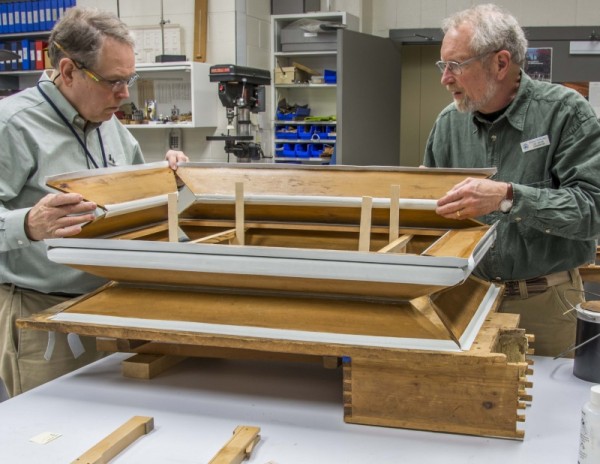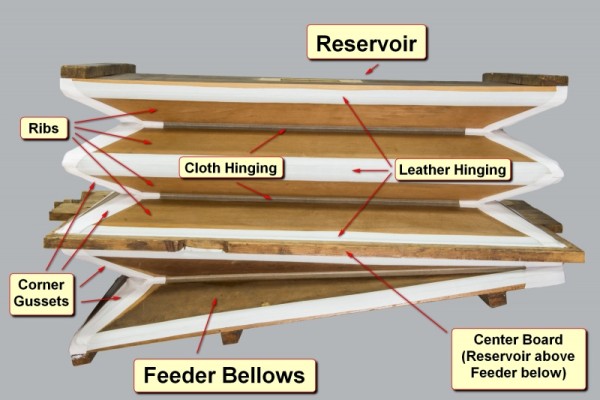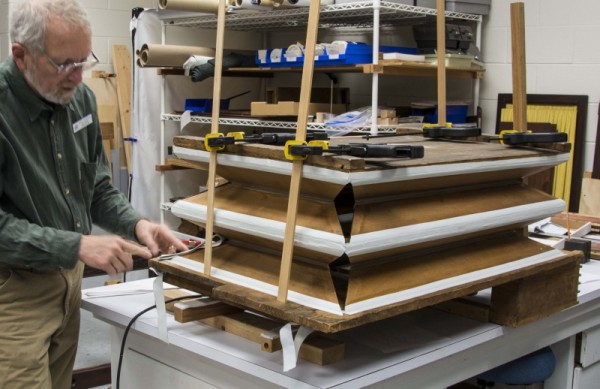
We recreated the assembly process based on evidence from the surviving fragments of old leather.
By John Watson
It has surely been much more than a century since these organ bellows have filled with air. Now they are ready to kick up some wind once again. Today’s post is about our treatment of the bellows.
It is unusual for an organ of such age to have so much evidence of its original leather. Although long torn beyond any hope of working, still, every detail of the leather and cloth hinging, with its layering and overlapping, was preserved for us to document and duplicate.

The “Tucker” bellows system with parts labeled. Only the center board is in a fixed position in the instrument.
This bellows system is typical of those found in all 18th-century pipe organs. It consists of a feeder bellows and a reservoir, both sharing a wide board between them (see labeled photo). The shared center board is fixed in position in the organ allowing the feeder below to move with the pumping pedal. As the reservoir fills with air, it expands upward, moving like lungs. Internal vents with check-valves (consisting of simple flaps) ensure the air travels only one direction, from the feeder to the reservoir, before proceeding to the wind-chest and the pipes.

Lou Dolive applies gusset leather in the corners.
Soft white leather and strips of linen serve as hinges. Larger lozenge-shaped patches of leather called gussets cover the corners.
We used hot hide glue throughout the bellows treatment. Perhaps not surprisingly, hide glue has a special affinity with hides fastening leather to wood almost instantaneously.
Since the bellows came to us already completely disassembled, we had to be careful to work out the vertical geometry before re-leathering: how low should the feeder bellows descend and how much headroom does the reservoir have when it fills completely?
Conservation of the Tucker organized piano is made possible by a gift in memory of N. Beverley Tucker, Jr.
[soliloquy id=”15869″]


Leave a Reply